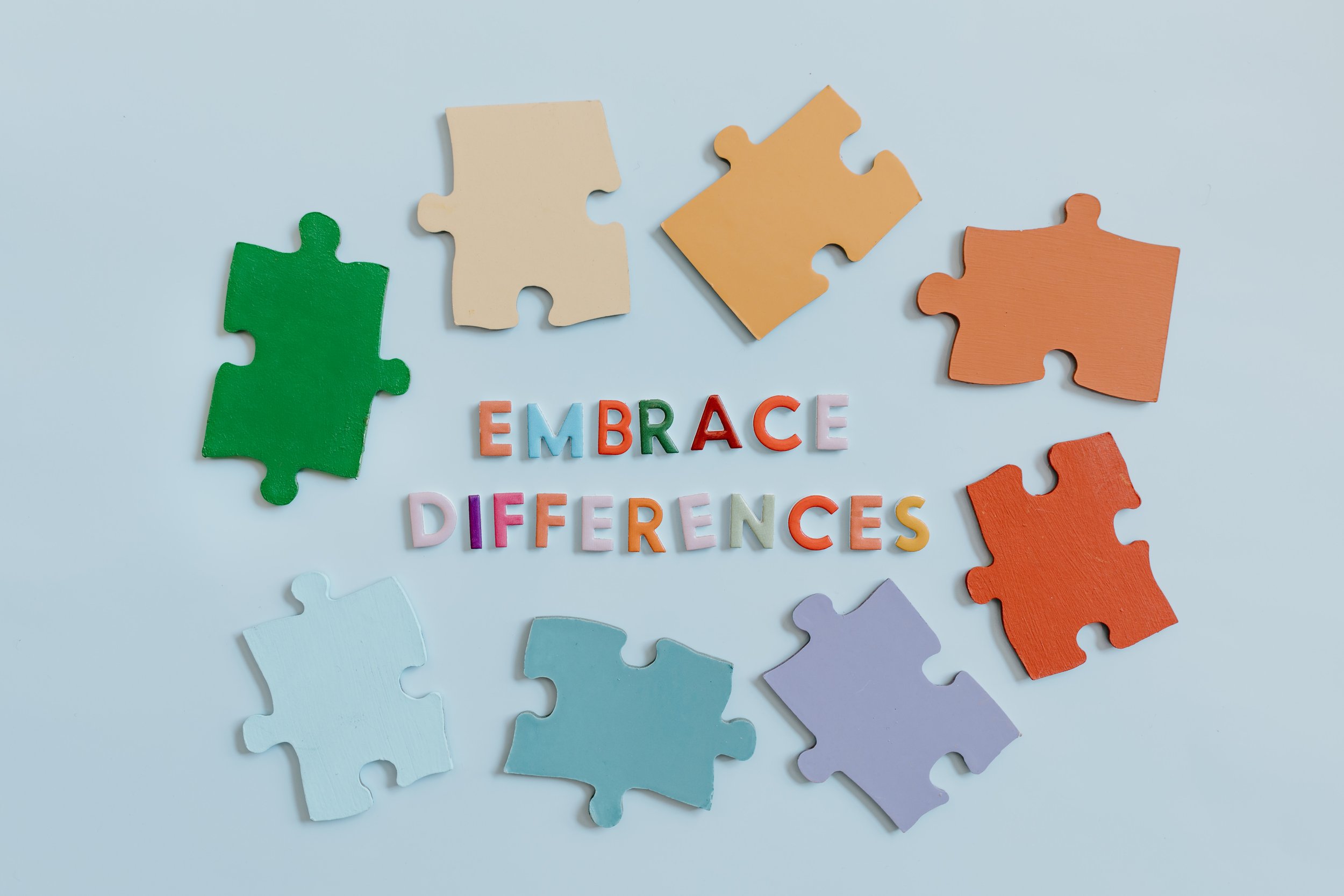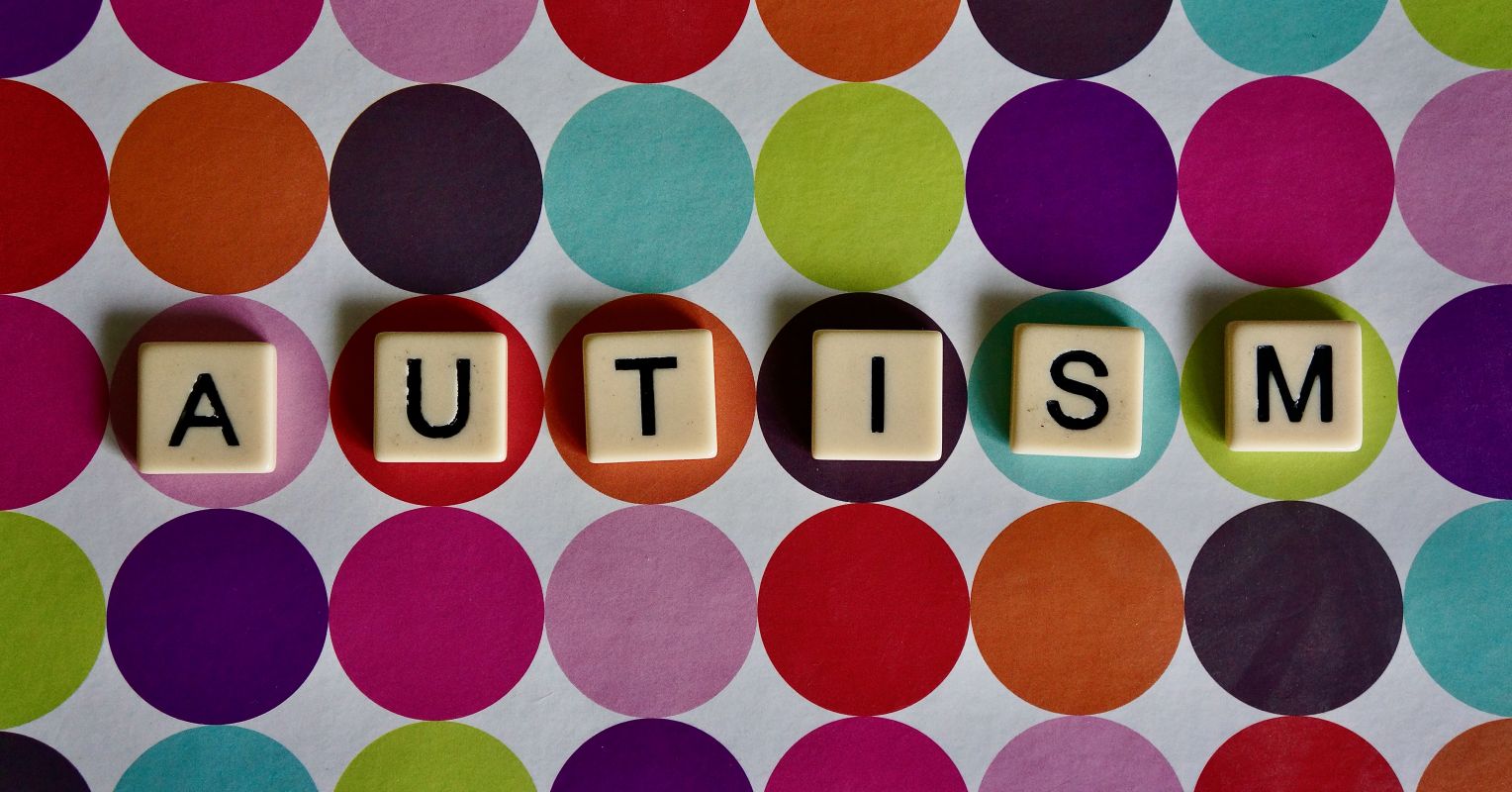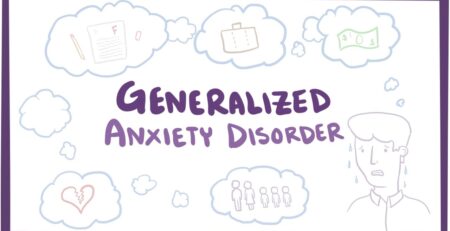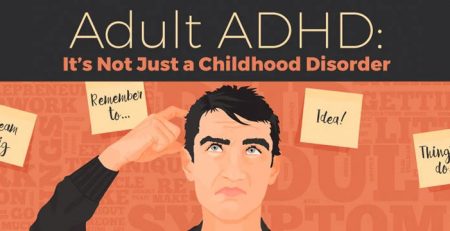Autism Spectrum Disorder
Autism Spectrum Disorder (ASD) is a complex neurobehavioral disorder that presents itself in various ways on different parts of the autism spectrum. People with ASD have difficulty communicating, engaging socially, and adapting to unfamiliar situations. It is estimated that about one n ten people show some signs of ASD, and over 50 million worldwide live with it. Along with understanding its symptoms, learning more about this disorder can benefit parents and caretakers who may be dealing with someone within their family or friend group who has been diagnosed. In this blog post, we’ll explore what Autism Spectrum Disorder is, some common signs to look out for, how it’s treated, and resources available to caregivers needing support along the way.
Signs and symptoms of ASD
The list below gives some examples of common types of behaviors in people diagnosed with ASD. Not all people with ASD will have all behaviors, but most will have several of the behaviors listed below.
Social communication / interaction behaviors may include:
- They are making little or inconsistent eye contact: Nervous glances dart around the room, searching for what’s comfortable to look at. Waist-up conversations, only looking into someone’s eyes briefly and awkwardly before asking a question. Unable to establish and maintain meaningful eye contact, it’s like finding yourself stuck in between a conversation nobody is enjoying anymore. These little movements of body language say just as much as the words people speak. It’s almost as if making little or inconsistent eye contact can form an invisible wall, masking true intentions and feelings from others in an uncomfortable space meant for sharing two souls united in one mutual agreement, but instead disconnects them on many different levels.
- Appearing not to look at or listen to people who are talking: Not so much as sparing a glance for those amid oration—individuals weaving stories with vibrantly voluble rhythm and repertoire employed. Refusing to be distracted by the mundane mumbling of others who are less keen to unearth knowledge. Abstemious toward anything capable of disrupting moments of cerebral serenity and understandings provoked by those having mastery of all forms of intangible expression. As protests, debates, discussions, and dialogues begin without the focus and observations emitted by this omit hub, their rhetoric becomes an absolute vacuum, powerless over insight.
- Infrequently sharing interest, emotion, or enjoyment of objects or activities (including infrequent pointing at or showing things to others): Interacting with others does not come naturally for everyone. Occasionally, someone might feel motivated to tell another about something enjoyable or meaningful in their life, such as constructive emotion or a hobby both of them like. It could be anything from an interest in famous works of art to a childhood experience that never left one’s thoughts forever. These enlightening, personable connections bridge gaps between acquaintances and strangers alike. One could express such shared goods by pointing out something that catches the eye in passing or distinctly placing the unsaid words into being: perhaps doing so would bring pairs closer than ever before. How wonderful it is to foster togetherness!
- Not responding or being slow to react to one’s name or other verbal bids for attention: When your name is called, it can be easy to brush it off or take too long to acknowledge someone is speaking to you. Such incidents do not go unnoticed and may make others feel alienated. A negative pattern of not responding or being slow to respond when somebody is attempting to engage can become viewed as a lack of respect. By addressing immediate communication, we show care and thoughtfulness toward a person’s point of view, regardless of whether we agree or disagree with the sentiment.
- Difficulty with the back-and-forth of conversation: Are you struggling with word choice during discussions? Is the frequent back and forth too much for you to handle? Do timelines blur together, and you forget which parts came before or after others? Constant dialogue can be slightly overwhelming, but impressing people with quick wit isn’t easy. Working on conversations actively can make all the difference by becoming more conscious of the words used in communication. With practice, having exciting discussions becomes a possibility.
- Often talking at length about a favorite subject without noticing that others are not interested or giving others a chance to respond: Are we guilty of talking about our favorite topics for ages without noticing if others are still interested? It’s easy to get caught up in the moment, forgetting thatotherse might have something valuable to contribute. We could benefit from giving one another a chance to make a response or chime in with their perspective. By doing this, we open ourselves up to new ideas and opinions! Often, talking at length only limits the abilities of both speaking and listeners. We might discover that our conversations can go way further than we expect if we allow each person to speak up about points without feeling rushed. So let’s embrace taking turns – because dialogue can be outrageously excellent!
- Displaying facial expressions, movements, and gestures that do not match what is being said: Your body language speaks volumes, even when your voice is silent. Nonverbal cues such as facial expressions, movements, and gestures often contradict what our mouths strive to convey. When these aspects do not align, it leads individuals to question the validity of the message. Consequently, thinking twice before relying on spoken words alone or risking sending mixed signals is essential. Embracing dialogue with a mindful eye on body language can create clarity, yielding more constructive conversation.
- Having an unusual tone of voice that may sound sing-song or flat and robot-like: Conversations with those with a unique tone of voice can be pretty peculiar. Depending on the individual, their pitch or intonation may come off as sing-song or even strangely monotone. Their communication style might sound almost robotic, creating a flat cadence demonstrating zero enthusiasm. However, the verbal expression does not always dictate mannerisms, As such, people can reveal humanity when you take the time to engage more deeply with them.
- Having trouble understanding another person’s point of view or being unable to predict or understand other people’s actions: Do you find it difficult to see things from another person’s perspective? Does attempting to explain their reasoning feels like an impossible challenge? Do you rarely know what response someone else’s action will generate? Understanding the attitudes and motives of others can be complex, yet grappling with these puzzles can be critical in building constructive relationships. By practicing compassionate listening, maintaining a mindful attitude, and allowing time for empathy, we can make tremendous progress in bridging gaps and enhancing our interactions with others.
- Difficulties adjusting behaviors to social situations: Adapting to different social settings can be challenging for many. Changing our behaviors to fit a variety of scenarios can be a challenging feat. Interacting with new people – whether in a public gathering or small group of close friends – can present us with unique daunting situations. Exploring cultural boundaries and developing universal rules for acting, speaking, and moving may also take some time. It isn’t often an easy process and requires personal growth, exploration of internal identity, and adaptations based on what’s most appropriate for the situation. While finding those perfect fits within society may seem arduous, it is possible through persistence, utilizing an open mind, interacting with those around you, and actively participating in conversations to make emotionally and spiritually meaningful connections.
- Difficulties with sharing in imaginative play or making friends: Sometimes, sharing requires a little creative imagination. Creating opportunities to interact with different people can bring problems when making friends. Engaging in imaginative play is crucial to forming authentic connections with those around us. We must take the initiative and courageously step out of our comfort zones to find someone with whom we can share experiences and build an enduring friendship that enables us to engage in enjoyable activities centered around pretend and imaginative play.
Restrictive/repetitive behaviors may include:
- They are repeating specific behaviors or having unusual behaviors, such as repeating words or phrases (echolalia): Engaging in certain behaviors more than once could be defined as a form of repetition. These same habits have the potential to become considered “unusual,” such as saying something over again or using the exact words multiple times. This pattern of communication is known as “echolalia.” It involves individuals reiterating what has been said, almost like entertaining themselves with their own words. Though this behavior isn’t something most people do regularly, it is still an exciting way to express emotion and mental awareness.
- Having a lasting intense interest in specific topics, such as numbers, details, or facts: Do you have a low, burning interest that extends beyond typical interaction with a subject? Do you find yourself desperately seeking details and facts surrounding something that fascinates and inspires you? If your eye for detail is persistent and uncompromising, if numbers bring you excitement or intense focus, then low interest in specific topics could be the perfect way to satisfy your interests! From a young age onward, people are often drawn in by the mystery of specific concepts – whether they fascinate and fixate upon molecules and ions or music theory. When this passion is harnessed, it can cultivate boundless rewards in whichever pathways those who possess these deep interests venture down!
- Showing overly focused interests, such as moving objects or parts of objects: Curious minds are interested in many things – even the most unlikely. Some become excessively focused on items like movement or components of objects. These issues pique their curiosity and invite an exploratory journey for further understanding. Closely examining such intricate topics can be incredibly entertaining, and various information generated from this research can present wonders from the ordinary.
- Becoming upset by slight changes in a routine and having difficulty with transitions: At times, it can be tough to maintain a sense of tranquility when insignificant things in a structured regimen diverge; this struggle is heightened when attempting to traverse augmentations to such established practices. Some folks may find themselves unable to refine their sentimentalities during shifts from the familiar successfully; others might suffer dissonance beneath heightening layers of distress as simple intercessions increasingly impair contented processes. Diametric requests accompanied by the fear that security can swiftly slip away can demolish feelings of surety, which could skulk about the more extended terms.
- Being more sensitive or less sensitive than other people to sensory input, such as light, sound, clothing, or temperature: Many people experience the sensation of incoming data, such as light, sound, clothing, or temperature, differently than their peers. Some are more sensitive, some less sensitive — it comes down to individual preference. Some report that they can’t be in bright or crowded places for too long and struggle when surrounded by people. Others feel fine in all types of sensory environments. All interpretations of visual, acoustic, and tactile stimulation, whether viewed as superior or inferior, deserve to be acknowledged and respected. After all, different sorts of feelings stem from the same kind of input.
People with ASD may also experience sleep problems and irritability.
People on the autism spectrum also may have many strengths, including:
- Being able to learn things in detail and remember information for long periods: For lifelong learning, having the power to pay attention to more information and recall facts is highly beneficial. Memory retention is a great contributor to mastering any skill or subject. Possessing this enables learners to accommodate new information and allows them to recall past occurrences. It has been observed that those with proficient Memorization skills tend to exhibit better problem-resolving abilities due to enhanced mental functioning. Being able to commit something to memory also calls for enabling creativity, where you can view material from numerous perspectives.
- Being strong visual and auditory learners: We are strong visual and auditory learners; our brains readily absorb information when presented in a manner that appeals to each of these types of learning. Looking at diagrams, videos, photos, or other graphics and listening to lectures, audio, conversations, and more help us comprehend concepts more quickly than if they were presented only through text. Being such avid learners through sight and sound elevates how much we can learn – it effectively doubles the number of forms education and knowledge can take.
- Excelling in math, science, music, or art: Pursuing excellence in math, science, music, or art can lead to thrilling explorations and opportunities. Gaining mastery over these sciences is no small feat and demonstrates proficiency, discipline, and a strong work ethic. Each offers unique insights into our world and sparks the curiosity that leads to lasting advancements in fields from software engineering to oil painting. Sets of puzzlers emerge at each level, whether algebra equations or movements of Sharps and Flat on the staff paper. As abilities sharpen and mastery grows, you can reap success as a practitioner and witness it firsthand. Being multilateral in your skills will shape who you are becoming! Play well!

Causes and related factors
Researchers are still unsure what causes Autism Spectrum Disorder (ASD), but studies show it is a mixture of genetic and environmental factors. To put it another way, both a person’s genes and the environment can come together in such a way that could lead to the disorder. There are some traits or risk factors which may make people more prone to developing ASD, including:
- Having a sibling with ASD: Having a sibling with Autism Spectrum Disorder, or ASD, can present unique challenges. Navigating through moments of understanding and differences can bring both joy and difficulty. Witnessing the growth that can take place in cognition, communication, and participation in life’s wonderfully experiential moments is incredibly rewarding. Learning to endure both the individual’s and your own needs as much as thoughtfully reflect on how both worlds collide, an unyielding responsibility requiring love, faith, and courage.
- Having older parents: Many people’s early childhoods were shaped by the parenting style of older generations. It can create expectations and rules that may not always best suit a particular child. In some cases, this may lead to an increased risk of anxiety and even ADHD. Older parents have an understanding of themselves and the world around them, which may drive them to set stricter boundaries for their children at an early age. This approach can sometimes inadvertently disrupt the typical development pattern in a child, resulting in concentration issues and mood swings that manifest in traits very similar to those of ADHD.
- Having certain genetic conditions (such as Down syndrome or Fragile X syndrome): The far-reaching implications of certain genetic diseases should be noted. Down and Fragile X Syndrome are among the most widely studied. Each affects a person physically and mentally in different stages of life. Individuals impacted by these disorders may experience medical issues such as cognitive impairment or physical features unique to each syndrome. Those with these diagnoses must receive medical assistance to maximize their quality of life. Living with an often oppressive diagnosis can be challenging and isolating, yet having community and empathizing with friends make a living far easier to reach its fullest potential. Additionally, research has illuminated ways in which society can better understand and sympathize with those affected to ensure that no child is left without the compassion and aid they deserve.
- Having a light birth weight: Many newborn babies come into the world with surprisingly low birth weights. This phenomenon can manifest in several ways and dramatically affect their postnatal growth. Babies born at a considerably lower weight than healthy, medically recommended sizes are usually identified as having light birth weight, traditionally determined by head circumference and hormone tests through blood analysis. This can trigger an array of issues for these little ones both during and after childbirth, ranging from respiratory disabilities to complications such as necrotizing enterocolitis and jaundice. Having such a low birth weight can be life-threatening for the baby, not just due to physical traits but through increased parental stressors and inadequate BMI measurements. Premature births are costlier for their parents and have an essential potential to impact their growth later in their lives.
As this article post has outlined, Autism Spectrum Disorder affects a large number of people all over the world. Understanding this disorder and its various signs can benefit those affected and their caregivers in manifold ways. By adopting the right strategies, depending on individual needs, ASD can be managed efficiently. At the same time, additional resources such as local support networks and counseling are also available to those struggling with ASD-related hardships. We hope this post provides helpful insight into understanding Autism Spectrum Disorder better. If you or someone you know is experiencing difficulties related to autism spectrum disorder, we highly recommend seeking professional help immediately. Don’t hesitate to contact us today to schedule an appointment where our trained professionals can provide much-needed assistance and guidance.











